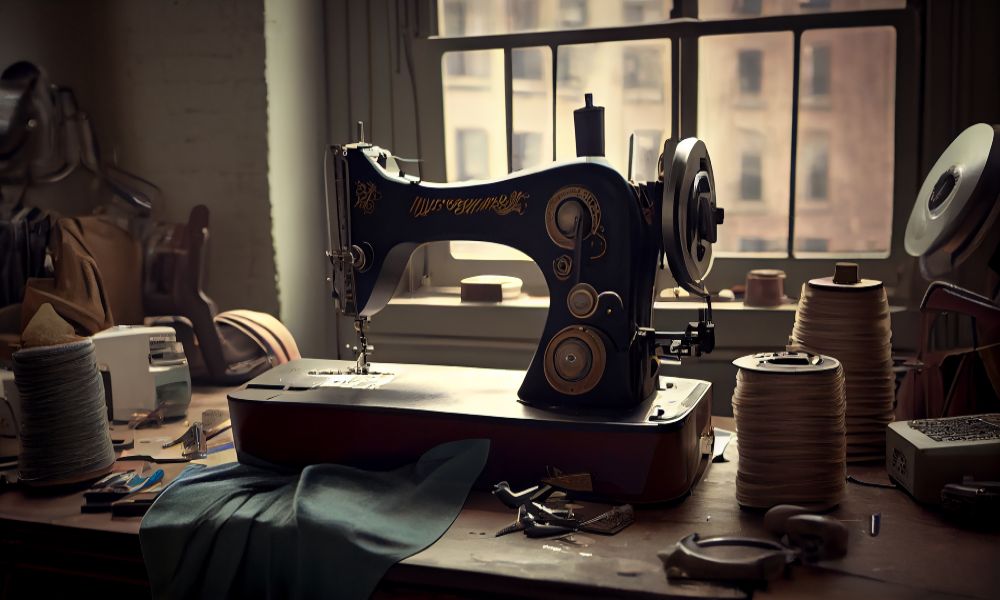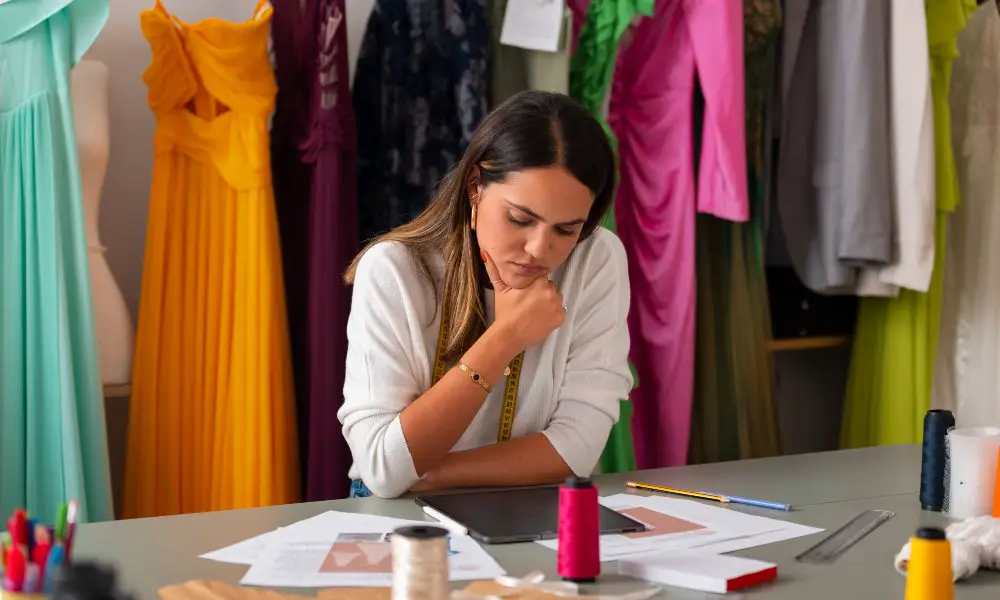Have you ever pondered the origins of the ubiquitous sewing machine, which has revolutionized the fashion and textile industries? Join us on an enthralling odyssey as we unravel the threads of ingenuity woven by the visionary minds behind this groundbreaking invention that has forever transformed how we create and construct garments, upholstery, and countless other fabric-based products.
The Pioneers of Sewing Innovation
The Quest for a Mechanical Seamstress
Long before the advent of the sewing machine, the arduous task of stitching fabric fell squarely on the shoulders of skilled tailors and seamstresses. Their nimble fingers deftly guided needles through layers of material, creating intricate patterns and sturdy seams through the art of hand sewing. However, as the demand for clothing and textiles surged, fueled by the Industrial Revolution, the need for a more efficient and mechanized solution became increasingly apparent.
Early attempts to replicate the intricate motions of hand sewing proved futile, as the complexity of the process defied simple mechanization. Countless inventors, including Thomas Saint and Josef Madersperger, grappled with the challenge, faced with the daunting task of replicating the skill and precision of human hands.
Walter Hunt’s Contribution (1834)
In 1834, Walter Hunt, an American inventor, crafted the first-ever practical sewing machine in the United States. Though a groundbreaking achievement, Hunt’s creation lacked the refinement and practicality necessary for widespread adoption. Plagued by limitations and a lack of commercialization, his invention remained a mere footnote in the annals of sewing history.
Barthélemy Thimonnier’s French Innovation (1830)
Four years before Hunt’s endeavor, a French tailor named Barthélemy Thimonnier had already etched his name in the sewing machine’s origin story. In 1830, Thimonnier became the first to patent a sewing machine, a feat that garnered both admiration and trepidation from the tailors of his time.
Thimonnier’s machine, while revolutionary, faced fierce resistance from the very individuals it sought to assist. Fearful of potential job losses, tailors and seamstresses staged violent protests, ultimately destroying Thimonnier’s factory and the unfortunate demise of his groundbreaking invention.
The Breakthrough: Elias Howe’s Game-Changer

The Journey of Elias Howe
Born in 1819 in Spencer, Massachusetts, Elias Howe’s inquisitive mind and insatiable curiosity set him on a path that would forever alter the course of textile manufacturing. Hailing from a family of modest means, Howe’s early life was marked by hardship and a relentless pursuit of knowledge.
During a chance encounter with the intricate workings of a traditional spinning machine, Howe’s fascination with mechanics took root. Witnessing the machine’s ability to replicate the complicated motions of human hands sparked a profound realization – if such a feat could be achieved for spinning, why not for sewing?
The Howe Sewing Machine (1845)
Fueled by this epiphany, Howe embarked on a journey that would culminate in creating his iconic sewing machine in 1845. Howe’s ingenious design featured a pivotal innovation – the lockstitch. This groundbreaking mechanism allowed for the formation of a sturdy, secure stitch by interlocking two separate threads, a feat that had eluded previous inventors like Thomas Stone and John Adams Doge.
The Howe sewing machine’s essential features, including an eye-pointed needle with a groove to accommodate the thread, a shuttling mechanism to form the lockstitch, and an automatic feed system, collectively ushered in a new era of textile production. Howe’s patent, granted in 1846, solidified his place in history as the father of the modern sewing machine.
Struggles and Eventual Success
Despite his remarkable achievement, Howe’s path to success was riddled with obstacles. Patent battles and legal disputes plagued his invention as competitors like John Fisher and Alex Askaroff sought to capitalize on his groundbreaking work. Undeterred, Howe persevered, ultimately emerging victorious in the legal arena and securing his rightful legacy.
The Refining Era: Singers, Wilsons, and Beyond
Isaac Merritt Singer’s Improvements
Building upon Howe’s pioneering work, Isaac Merritt Singer, an actor-turned-inventor, introduced a series of refinements that propelled the sewing machine into the mainstream. In 1851, Singer established the Singer Sewing Machine Company, a venture that produced high-quality machines and revolutionized marketing and mass production.
Singer incorporated user-friendly features into their machines, including a presser foot that holds the fabric in place and a vertical needle bar. These features made sewing more efficient and accessible to a wider audience. The Singer manufacturing company’s machines quickly gained popularity, setting new standards for speed, precision, and versatility in the textile industry.
The Wilsons’ Contribution
Alongside the Singers, the Wilson family played a pivotal role in the evolution of the sewing machine. Allen B. Wilson and his partner Nathaniel Wheeler founded the Wheeler & Wilson Company in 1856, introducing groundbreaking features like a rotary bobbin and a four-motion feed system, further enhancing the mechanical sewing experience.
The Wheeler & Wilson machines quickly gained popularity, setting new standards for speed, precision, and versatility in the textile industry, fueling the sewing machine war between competing manufacturers.
The Sewing Machine Revolution
As the 19th century progressed, the sewing machine transformed remarkably, evolving from a cottage industry novelty to a mass manufacturing powerhouse. The advent of these ingenious machines, pioneered by visionaries like Elias Howe, Isaac Merritt Singer, and the Wilson family, democratized clothing and textiles, making fashionable attire accessible to the masses and forever altering the landscape of the garment industry.
From humble workshops to bustling factories, the sewing machine’s impact reverberated across the globe, fueling economic growth and ushering in a new era of textile production efficiency. The introduction of electric sewing machines in the 20th century further revolutionized the industry, paving the way for industrial sewing machines and large-scale manufacturing.
FAQs
Who is considered the inventor of the modern sewing machine?
Elias Howe is widely regarded as the inventor of the modern sewing machine. His patented design in 1846, featuring the lockstitch mechanism, revolutionized textile production and paved the way for mass manufacturing of clothing and other fabric-based products.
What was the first patented sewing machine?
The first patented sewing machine was invented by French tailor Barthélemy Thimonnier in 1830. However, his machine faced opposition from tailors who feared job losses, leading to the destruction of his factory and the demise of his invention.
How did Isaac Merritt Singer contribute to developing the sewing machine?
Isaac Merritt Singer introduced several improvements to the sewing machine, including a presser foot and a vertical needle bar. He also established the Singer Sewing Machine Company, which played a crucial role in the mass production and marketing of sewing machines.
What was the significance of the lockstitch mechanism in Elias Howe’s sewing machine?
The lockstitch mechanism allowed for forming a sturdy, secure stitch by interlocking two separate threads. This innovation was a game-changer, as it solved the problem of creating a reliable stitch that had eluded previous inventors.
How did the sewing machine impact the textile industry and society?
The sewing machine revolutionized the textile industry by enabling mass production of clothing and other fabric-based products. It also democratized fashion, making stylish attire more accessible to the masses, and fueled economic growth during the Industrial Revolution.
Conclusion
The sewing machine’s journey is a testament to human ingenuity and perseverance. From the early pioneers like Barthélemy Thimonnier and Walter Hunt, who dared to dream of a mechanical seamstress, to the groundbreaking innovations of Elias Howe, Isaac Merritt Singer, and the Wilson family that brought those dreams to fruition, this revolutionary device has forever transformed the way we create, design, and clothe ourselves.
As we look ahead, one can’t help but wonder: what new frontiers await the humble sewing machine? Will emerging technologies continue to push the boundaries of textile production, or will we witness a renaissance of traditional craftsmanship? Only time will tell, but one thing is sure – the sewing machine’s impact on our world is as indelible as the stitches it creates.
What technological advancements or cultural shifts do you envision shaping the future of sewing and textile production?
***
Main image: pexels




